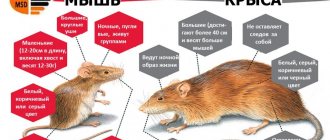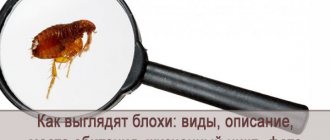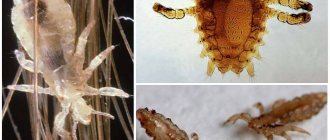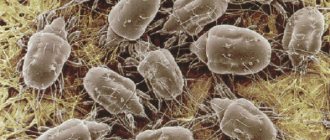A mole is an insectivorous mammal that spends almost its entire life underground. These little animals are silent and invisible, but at the same time they live almost everywhere. People often don't notice unusual animals because they rarely come to the surface.
Nature has endowed moles with unique abilities that allow the animals to live comfortably underground.
general characteristics
In the natural environment, there are several varieties of moles. The smallest representative of the species is the Sichuan shrew mole, its body length rarely exceeds 6–8 cm, its tail is from 5 to 6.5 cm, and the body weight of a mature individual is only 10–15 g. The largest mole is the Ussuri moger, length the body of a mature individual is from 20 cm, and the weight can reach up to 300 g. All moles, without exception, have characteristic features that help them survive underground.
Moles have a short, bar-shaped body, rounded at the sides.
The neck is not pronounced and seems to be a continuation of the body. If you look at the mole from above, it seems that the head grows straight from the shoulders. The shape of the head is cone-shaped, wider at the back of the head with a well-defined narrowing towards the nose.
The animals' ears are vestigial without an auricle. The location of the ear canals is determined by the presence of a skin ridge. In some varieties, the kalik is almost invisible under a layer of wool. The nose of moles is narrow and protrudes strongly above the lower lip; it is mobile and sensitive. The nostrils are wide, located on the sides, but directed forward.
Usually the mole's nose is not covered with hairs, with the exception of long, sensitive whiskers.
Unlike other varieties, the nose of the star-nosed mole ends not with an ordinary lobe, but with unique star-shaped skin outgrowths. They are soft, sensitive and similar to earthworms, the number of outgrowths is about 22 pieces.
Underground life has left its mark on animals. The moles' eyes have lost their intended purpose and are almost completely hidden under the skin. In some species, such as Caucasian moles, the eyeballs can only be seen on an x-ray. In others, the size of the eyes does not exceed the diameter of a poppy seed. Sometimes the eyes are equipped with a regular eyelid, which protects them from dust and soil. But some varieties have small slits in the skin opposite the eyes.
Elena
Ask a Question
Question to the expert
How do moles navigate underground?
Moles cannot see, but they have a well-developed sense of smell and hearing. They are able to smell or hear prey under a thick layer of earth. Animals also navigate thanks to sensitive vibrissae on the nose and tail.
Moles are quite toothy creatures, depending on the species they have maybe 34 to 44 well-developed, sharp teeth. They help hold nimble prey and chew food.
Subterranean mammals communicate with each other using various sounds. They may squeak, hiss or squeal.
Moles have strong and well-developed forelimbs with five-toed paws.
Each toe has a thick, blunt claw designed for digging. The claw is slightly curved outward, and on the inside there is a small depression that allows you to better grip the ground when digging tunnels.
There are no membranes between the fingers, but the hands are wide, spade-shaped and with the palms turned outward.
Under the ground, moles can move forward with their heads or tails. Moreover, the speed in both cases is the same. The fur on the animal's body is located in such a way that it does not interfere with movement. The wool easily bends in the desired direction.
The hind limbs are long, thin and somewhat reminiscent of rat paws in structure. The hind legs have claws, but they are much smaller than the front ones. The tail of moles is quite long, from 2 to 10 cm, its size depends on the type of animal.
Moles are very good swimmers. During a flood, small animals are able to swim across even a strong stream or a small river.
The entire body of animals is covered with soft, dense fur.
The wool grows perpendicularly and has special constrictions in the core. This allows the hairs to bend in any direction and makes it easier for the animal to move underground. Surprisingly, the fur of moles practically does not get dirty; fine debris and dust do not penetrate deeply, but settle at the very ends of the hairs. Therefore, it is enough for the mole to shake itself to clear the soil from its coat.
The color of the coat depends on the type of animal and its habitat. In the natural environment you can find black, dark brown, gray, dark red moles with different shades of fur.
Molting among underground inhabitants occurs 3–4 times a year.
Moles can shed both in the off-season and in the summer. This feature is due to the fact that animal fur quickly wears off from contact with rough surfaces. That is, in fact, the mole constantly renews its fur coat and only in winter does molting not have a pronounced character. Areas of skin where there is no hair become dense and darken. The remaining hairs are quickly wiped off, and new ones grow in their place.
The first molt of moles begins from April to June. Usually the females molt first, followed by the males. The second molt occurs already in July, in adults the spring coat changes to summer, and in young animals the baby coat comes off and an “adult” coat grows. The third autumn moult begins almost without interval; it is well expressed and occurs very quickly. The thin summer coat changes to a thick winter coat. During this period, animal fur is considered the most beautiful; it shines, shimmers, and becomes velvety to the touch.
Question to the expert
Is it possible to have a mole as a pet?
Moles cannot live in captivity. It is important to consider that the animal spends most of its life underground. Therefore, only professionals can provide an unusual pet with comfortable conditions.
Noise repellers
Moles have very sensitive hearing; loud sounds frighten and irritate animals. Therefore, the most popular and effective method of control is sound and ultrasonic repellers. These devices look like pins that need to be stuck into the ground in places where moles are detected, since the vibrations travel well through the soil. Such repellers can also be effective against rodents and snakes.
As a free alternative, you can use the folk method - a battery-powered radio, which is placed in a waterproof bag on the molehill. True, unlike special repellers, this method can affect not only moles, but also neighbors.
Habitat
Moles live almost all over the world, with the exception of those areas where the ground is unsuitable for digging and cold areas where the soil freezes to great depths. Representatives of the underground world can be found in Europe and Asia. On the Asian part of the mainland, animals are found in the Caucasus, Turkey, China, Mongolia and Indochina. The only exceptions are the southern regions. On the American continents, mole populations are found in southeastern Canada, Mexico, and almost all central and eastern regions.
Mole populations are found only in areas suitable for their existence.
Animals prefer loose soils. They never settle in wetlands. The main condition is the availability of food supply; the more food, the more animals can gather in one area. Populations usually inhabit clearings, forest edges, non-water meadows and agricultural fields.
What do they eat?
The diet of most varieties consists of earthworms, slugs, snails, insects and larvae that hide underground or in dead leaves. But starfish, in addition to their usual food, can feed on small fish, shellfish and other underwater creatures. And mogers supplement their menu with butterflies and caterpillars. In addition, many varieties include plant foods in their diet.
On average, moles feed 5 to 6 times a day.
After each meal, the animals curl up into a ball and fall asleep. Sleep lasts from 3 to 4 hours, the mole spends this time digesting food. In one meal, the animal eats about 20–30 g of worms and insects; per day, the amount of animals eaten can exceed 90–100 g. In the summer, the amount of food eaten increases, as the heat speeds up metabolism.
Moles have a high metabolism, so they must eat a new portion every 14–17 hours. If the animal does not find food, it may die of hunger.
After the mole catches the worm, it eats it whole or tears it into small pieces. But before eating, the animal always squeezes the earth out of the worm’s body.
Mole lifestyle
Moles are considered uncooperative animals, so for a significant part of their entire lives they remain completely alone under the thickness of the earth. The only exception is the mating period of animals.
These diggers rarely change their usual habitats; most of their lives are spent in the same tunnel system that they once dug.
Moles are endowed with two glands that produce a musky-smelling secretion. With this smell they attract individuals of the opposite sex for mating, as well as worms, which form the basis of their food supply.
To survive, a mole needs to eat a number of worms and insects per day equal to half its weight. These diggers make such an extensive network of tunnels so that they contain more worms and insects that lead an underground lifestyle.
If the network of passages does not fully provide the mole with food, he begins to expand it to the required size.
The total length of underground passages can be several hundred meters. Moles constantly move along them in search of insects and worms, which turn out to be their easy prey. All underground communications formed by a mole can be divided into 2 types:
- Labyrinths of passages located near the surface of the earth. They act as traps for insects and worms, providing the mole with food. It is curious that without food, a mole cannot live more than 15 hours.
- The other type of passages are located much deeper. There, the animals arrange sleeping quarters for themselves and take shelter during the cold periods of the year. Since the animals need moisture, they dig passages from their sleeping quarters leading to water sources.
Lifestyle and character traits
The mole's entire life is spent underground. Animals very rarely leave their tunnels and come to the surface.
A massive emergence of moles can only be observed during the breeding season or spring flood.
Lifestyle
Moles dig long but shallow passages, rotating around their axis and spreading their paws. If the move is shallow, then a small roller appears above the surface, and all the earth is compacted. But when constructing permanent tunnels at a depth of 15 cm, the mole throws excess soil to the surface.
A pile of earth around the entrance to the labyrinth can reach a height of 50 to 80 cm and is called a molehill.
Elena
Ask a Question
Question to the expert
Do moles hibernate?
Moles do not hibernate, but in winter they practically do not appear on the surface. They stock up and eat from their pantries all winter. But animals can make tunnels under snow and fallen leaves in search of additional food.
Character and habits
Moles are famous for their thriftiness. Animals build pantries in their tunnels and store food in them in winter and summer. Most animals have several storage rooms, in case they have to leave their main home.
Moles do not dig a hole every time they go in search of food. Usually the worms themselves crawl into dug tunnels based on the musky smell and heat that the underground animal gives off.
Underground inhabitants lead a solitary lifestyle and unite in pairs only during the mating season. Moles are very quarrelsome and jealously guard their territories from outsiders. They mark the boundaries of their possessions with an odorous secretion that accumulates on the fur in the abdomen area.
Pipe trap
You can buy special traps for moles in stores, but they injure or even kill the animal. An equally effective, but at the same time humane alternative is pipe traps, which allow you to catch a mole without harming it.
Tube traps are placed in the mole tunnel. When the animal passes through it, it gets stuck in the pipe. Then the trap needs to be pulled out and the mole released away from human habitation. Best of all - in a field, in a river floodplain, on the edge of a forest or in a deciduous forest. The soils of coniferous forests are too hard for it.
We must remember that the mole needs to eat constantly; just 14 hours without food can lead to the death of the animal. Therefore, traps should not be left for more than one day. Most often they are placed at night.
Reproduction and raising of offspring
In most cases, the timing and duration of the mating season depend on the species and habitat.
Moles, depending on the species, reach maturity a few months after birth or a year later.
Mating season
On average, the mating season begins at the end of March, but some individuals mate underground while there is still snow on the surface. Therefore, the timing of the birth of cubs can vary significantly. In addition, young females go looking for a mate later than adults.
During the mating season, moles leave their underground shelters. Females usually do not go far from their tunnels and wait for a male to appear in their territory. Males, on the contrary, actively move in search of a partner and are guided by smells and sounds.
Economic importance of moles
During the Soviet Union, people highly valued mole fur. The beautiful velvety skins of the animal are very durable; they were used for sewing fur coats. Such fur coats were not the warmest, but they were in fashion and cost a lot of money.
In the middle of the last century, mole fishing in the USSR was in full swing. Animal skins were harvested in significant quantities throughout the country, especially in the Urals and central Russia.
Nowadays, the fashion for mole fur coats has gone, and along with it, such a craft has lost its significance. In some regions of Russia, moles continue to be caught and their skins are used for making clothes. But the volume of such catching is quite insignificant.
Interesting Facts
Moles are unique and amazing creatures in their own way. But it is not recommended to have an unusual animal at home. Because not every professional can create conditions for a comfortable life.
Many interesting facts are known about moles, however, they are considered an incompletely studied species. This is due to their specific habitat.
Interesting Facts:
- Moles, like all underground inhabitants, are very sensitive to vibration. Their behavior can predict disasters such as earthquakes, volcanic eruptions and landslides. In general, everything that is connected with the movement of the earth's layers.
- Molehill soil is an excellent source of fertile soil for garden beds. It does not need to be sifted, it is airy and loose.
- Some Danish archaeological scientists use moles in excavations. Small and very hardworking creatures push to the surface everything that prevents them from digging a tunnel. Including archaeological finds.
- The word "mole" is used to describe secret agents in intelligence organizations. People of this profession, like moles, must have the ability to quietly infiltrate any structure.
- Dirt and dust do not stick to mole fur. It is enough for the animal to shake itself off to get rid of small debris.
- In the cartoon “Thumbelina,” the old mole took his bride to the storerooms with a large supply of food. In real life, moles are indeed famous for their thriftiness. Their tunnels are used for food storage.
- Mole passages lie at shallow depths, but can be from 100 to 200 meters in length, which is several hundred times greater than the size of the animal itself.
- There is a bone in the external genitalia of males.
- Moles do not hibernate, but since it is very difficult to find food in cold weather, they make impressive reserves.
- Contrary to myths and rumors, all moles have eyes. It’s just that in some animals they are located under the skin and are visible only on x-rays. In most cases, the small eyes are hidden behind small slits in the skin or eyelid.
- Like all small animals, moles have an increased metabolism. Therefore, animals must eat almost constantly. An adult animal can eat an amount of food equal to its own weight per day.
- The animals do not live in captivity and are not tamed. At one time they tried to breed them to obtain soft skins, but the idea quickly failed.
- In the USSR, moles were hunted for their skins. Every year the population decreased by several million individuals. Currently, mole hunting is prohibited.
- In loose soil, a mole can dig a meter-long tunnel in 3–5 minutes.
- According to statistics, moles destroy about 1% of crops worldwide. Basically, they do not eat plants, but their active underground activity leads to damage to roots and death of crops.
- A mole's mouth has more teeth than a human's. Depending on the variety, the number of teeth can be from 34 to 44 pieces.
- Moles molt 3-4 times a year.
- In addition to the main food pantries, each mole has an additional warehouse in case something happens to the main one.
- Moles see practically nothing. But animals have very sensitive hearing and a well-developed sense of smell.
- Some moles are excellent swimmers and can even swim across a stormy stream. And such a species as the starfish is capable of diving and preying on underwater inhabitants.
- On occasion, moles may dine on a small mammal or bird.
- Moles' fur grows straight up without tilting. But each hair has a constriction in the central part, this allows it to bend in different directions.
Scented repellers
The mole has well-developed not only vision, but also a sense of smell. Therefore, one of the most popular folk methods of fighting moles is to place substances with a strong odor in the tunnels. Recommended to use:
- coffee grounds;
- rags soaked in gasoline or fuel oil;
- spoiled fish and rotten eggs;
- hot peppers;
- garlic;
- Castor oil.
Stores also sell special aromatic granules that need to be scattered on the ground and watered with water or poured into mole tunnels. But all these methods are ineffective - when faced with an unpleasant odor, the mole simply blocks the tunnel through which it penetrates and digs a new one. Unlike vibrations, odors do not spread through the thickness of the earth.











